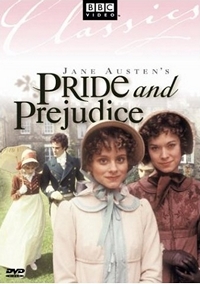I have been blogging about Jane Austen here at Austenprose for over five years and I have reviewed many books and movies, yet I have held off writing about the one that really turned me into a Jane Austen disciple—the 1980 BBC Pride and Prejudice. When something is close to our hearts we want to... Continue Reading →
Follow Friday: Masterpiece Classic PBS
This year marks the 40th anniversary of Masterpiece Theatre, now with a new name of Masterpiece Classic under the umbrella of Masterpiece: which includes the trifecta of presentations in the Classic, Mystery and Contemporary categories. This television show premiered in 1971 and is produced by WGBH in Boston. It airs on PBS in the US... Continue Reading →
Elizabeth Bennet my Cheerleader @ Heroine Love
Do our favorite heroines change our lives? Mine did. Read my contribution about Elizabeth Bennet on Heroine Love, author Erin Blakemore's 18 day tribute in February to the literary heorine's in our lives. Seventeen book bloggers and fellow authors have contributed posts each day about their favorite heroines and offered great giveaways. Follow the link... Continue Reading →
‘Pride and Prejudice without Zombies’: Dressing for the Netherfield Ball in Pride and Prejudice: Regency Fashion
Gentle Readers: in celebration of the ‘Pride and Prejudice without Zombies’ event over the next month, I have asked several of my fellow Jane Austen bloggers to share their knowledge and interest in Austen’s most popular novel. Today, please welcome guest blogger Vic from Jane Austen’s World who shares with us her extensive knowledge of... Continue Reading →
Austen at Large: Darcy and Davies: Adapting Mr. Darcy from the Novel to the Screen
Pride and Prejudice is Jane Austen's most popular if not most adapted novel, and its famous hero Mr. Darcy has been interpreted in many different ways. There have been several excellent period adaptations of Pride and Prejudice which present Darcy's character differently, particularly Fay Weldon's 1980 and Andrew Davies 1995 versions. These two adaptations master... Continue Reading →
Austen at Large: Some of my own prejudices when it come to Pride and Prejudice
This week, as I began to reread Pride and Prejudice with my Jane Austen class, I have discovered some prejudices that I have. In reading a book that I know and love so well, I have almost found it hard to understand some people's opinions of it. I will say that most girls in my... Continue Reading →





